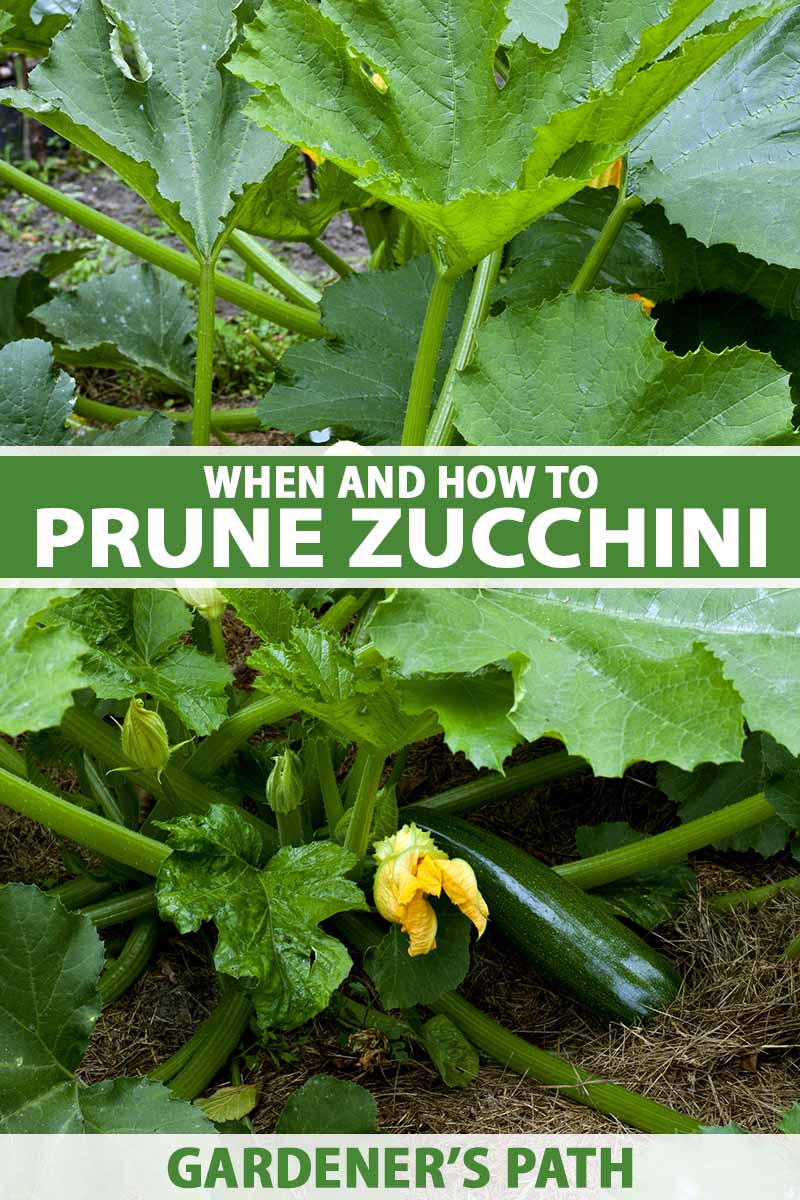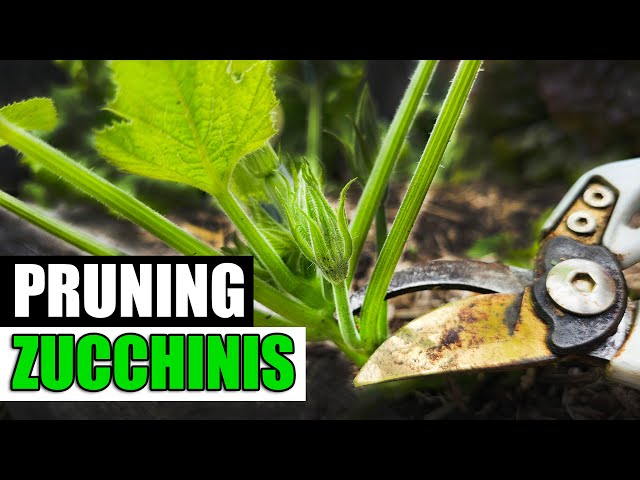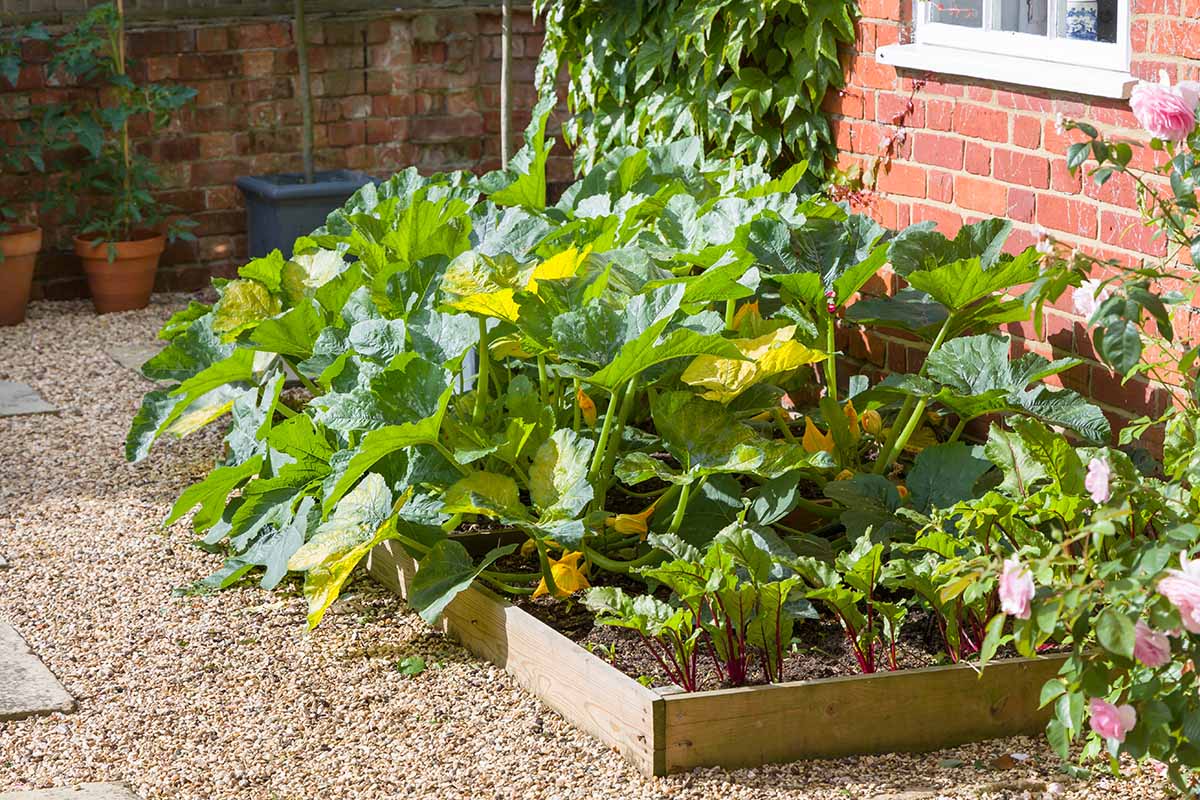So you’ve decided to try your hand at gardening and have planted some zucchini plants in your backyard. Now, the next step in ensuring a successful harvest is learning how to properly trim your zucchini plants. Trimming is an essential technique that not only promotes healthy growth but also increases your chances of yielding more delicious zucchinis. In this beginner’s guide, we will walk you through the basics of trimming zucchini plants, from when to start to the proper techniques to use. Get ready to nurture your plants to their fullest potential and enjoy an abundant zucchini harvest!

Why Trim Zucchini Plants
Promote healthy growth
Trimming zucchini plants is crucial to promoting healthy growth. By selectively removing certain parts of the plant, you can redirect its energy towards producing more fruits and maintaining overall plant vigor. Trimming helps stimulate new growth and allows the plant to focus its resources on developing robust foliage and abundant flowers. This leads to a stronger and more productive zucchini plant.
Prevent diseases
Regularly trimming your zucchini plants can also help prevent the spread of diseases. By removing diseased or infected foliage, you reduce the risk of fungal or bacterial pathogens from taking hold and spreading throughout the plant. Trimming allows for better air circulation and sunlight penetration, which can create an unfavorable environment for diseases to thrive. It is important to stay vigilant and promptly remove any signs of disease to protect the health of your zucchini plants.
Improve air circulation
Proper air circulation is vital for the overall health of zucchini plants. When foliage becomes too dense, it can create a damp and humid environment where fungal diseases thrive. Trimming the plants helps open up the canopy, allowing air to flow freely through the leaves. Improved air circulation not only reduces the risk of diseases but also helps prevent pest infestations. By regularly trimming your zucchini plants, you create a healthier growing environment for your crops.
Increase fruit production
One of the key benefits of trimming zucchini plants is the increased fruit production it can stimulate. By removing excess foliage and directing the plant’s energy towards fruit development, you can encourage larger harvests. Trimming also helps prevent overcrowding within the plant, allowing each fruit to receive adequate nutrients and sunlight. With proper trimming techniques, you can optimize the plant’s reproductive capacity and enjoy bountiful zucchini harvests.
When to Trim Zucchini Plants
During early spring
The ideal time to trim zucchini plants is during early spring, before they enter their peak growth period. This is typically when the danger of frost has passed, and temperatures start to rise consistently. By trimming during this time, you can shape the plants and remove any dead or damaged foliage that may have occurred over winter. Early spring pruning sets the foundation for healthy growth and increased fruit production throughout the growing season.
Throughout the growing season
Trimming zucchini plants throughout the growing season is essential to maintain their health and productivity. Regular maintenance trimming allows you to keep the plants in check, remove any diseased or yellowing leaves, and promote new growth. Monitoring the plants every few weeks and trimming as needed will prevent them from becoming unruly and overcrowded, ensuring optimal zucchini production.
Before the first frost
Before the first frost of the season arrives, it is important to do a final trimming session for your zucchini plants. Removing excessive foliage and any damaged or diseased leaves at this time helps prepare the plants for winter. Trimming before the first frost minimizes the risk of diseases overwintering on the remaining foliage and ensures a healthier start for your zucchini plants in the following growing season.

Tools Needed for Trimming
Sharp, clean pruning shears
Investing in a pair of sharp, clean pruning shears is essential for successful trimming. Dull shears can damage the plant by crushing the tissue, while dirty shears may introduce bacteria or fungi to the plant. Choose a pair of shears specifically designed for pruning, and keep them clean and sharp for optimal performance.
Gloves
Protecting your hands while trimming zucchini plants is important, as some individuals may experience skin irritation or allergies from handling the plants. Choose a pair of comfortable and durable gardening gloves that provide adequate protection without compromising your dexterity. Gloves can also safeguard against accidental cuts or scratches from thorns or sharp branches.
Disinfectant solution
To prevent the spread of diseases between plants, it is crucial to disinfect your pruning shears between each use. Prepare a disinfectant solution by diluting household bleach or rubbing alcohol in water, following the product’s instructions. After each cut, dip the pruning shears into the solution to kill any potential pathogens. This simple step helps maintain the health of your zucchini plants and prevents disease transmission.
Bucket or bag for collecting trimmings
Having a bucket or bag to collect the trimmings makes the cleanup process easier and more efficient. Rather than leaving the plant debris scattered around, gather them in a container for proper disposal. Collecting the trimmings also gives you the opportunity to inspect them for any signs of disease or pests, enhancing your plant’s overall health.
Preparing for Trimming
Choose a sunny day
When planning to trim your zucchini plants, make sure to choose a sunny day for optimal conditions. Sunlight helps stimulate plant growth and promotes healing after pruning. It also allows you to assess your plants more accurately, as bright light makes it easier to identify dead or diseased foliage.
Water the plants a day before
To prepare your zucchini plants for trimming, water them thoroughly a day before the scheduled pruning. Well-hydrated plants are more resilient and can better withstand the stress of trimming. Additionally, watering helps soften the plant tissue, making it easier to make clean cuts.
Wear protective clothing and gloves
Before you start trimming, make sure to put on appropriate protective clothing and gloves. Long-sleeved shirts and pants help safeguard your skin from potential allergens or irritants. Additionally, wearing gloves protects your hands from potential scratches and cuts. Remember, it’s better to be safe than sorry, so ensure you are properly covered before commencing with the pruning.
Inspect the plants for any signs of diseases or pests
Before you begin trimming, carefully inspect your zucchini plants for any signs of diseases or pests. Look out for yellowing or wilted leaves, spots, discoloration, or unusual growth patterns. Remove any visibly infected or infested foliage to prevent the spread of diseases and pests during the trimming process. By addressing these issues before pruning, you can minimize their impact and maintain the health of your zucchini plants.

Step-by-Step Process of Trimming
Identify the main stem
Start by identifying the main stem of the zucchini plant. This is the central vertical stem that supports the plant’s growth. By recognizing the main stem, you can better visualize where and how to make your pruning cuts.
Remove any suckers or side shoots
Suckers are the small shoots that grow from the base or leaf axils of the main stem. Although they may seem harmless, suckers can divert energy away from fruit production and hinder overall plant growth. Carefully remove the suckers by making a clean cut at their base, ensuring you do not damage the main stem.
Pinch off dead or diseased foliage
Pinching off dead or diseased foliage is an important step in maintaining the health of your zucchini plants. Using your fingers or pruning shears, carefully remove any discolored, yellowing, or wilted leaves. Take care not to yank or tear the foliage, as this can cause unnecessary damage to the plant.
Cut off any damaged or wilted leaves
Inspect the plant for any damaged or wilted leaves that are beyond recovery. If these leaves are negatively impacting the overall appearance or health of the plant, it is best to remove them. Make clean cuts close to the base of the leaf where it meets the stem.
Trim back excessively long stems
If you have excessively long stems that are reaching beyond the desired boundaries, it is advisable to trim them back. Cutting these long stems helps control the spread of the plant and prevents overcrowding. Trim them to a length that allows for proper air circulation and supports healthy growth.
Prune to encourage branching
To encourage branching and stimulate the growth of lateral shoots, make strategic pruning cuts just above a bud or leaf node. This technique helps promote a bushier and more compact zucchini plant, creating space for more flowers and subsequent fruit development. Remember to make clean, angled cuts to avoid damaging the plant tissue.
Remove old or yellowing leaves near the base
As zucchini plants grow, older and lower leaves may start to yellow or decline. Removing these leaves helps redirect the plant’s energy towards new growth and fruit production. Carefully trim off any old or yellowing leaves near the base, ensuring you do not damage the healthy foliage.
Trim the vines to control their spread
If the vines of your zucchini plant are starting to exceed your desired space, trim them back to keep them in check. Restricting the spread of the vines makes it easier to manage the plant and prevents it from overpowering other nearby vegetation. Make clean cuts at the point where the vine meets the main stem or other lateral branches.
Dispose of trimmings properly
After completing the trimming process, it is essential to dispose of the trimmings properly. Collect them in a bucket or bag and discard them in a compost bin or municipal green waste bin. It is important not to leave the trimmings on the ground, as they can harbor pests or pathogens and potentially re-infect your zucchini plants.
Additional Tips for Trimming
Avoid over-trimming
While it is important to trim zucchini plants, it is equally crucial to avoid over-trimming. Over-pruning can lead to stress and reduced plant productivity. Stick to the recommended techniques outlined in this guide, and remember that moderation is key. Only remove what is necessary for the health and growth of your zucchini plants.
Regularly inspect the plants
Regularly inspecting your zucchini plants is essential to ensure their well-being. Keep an eye out for any signs of disease, pests, or nutrient deficiencies. By catching and addressing these issues early on, you can prevent them from spreading and causing significant damage. Regular inspections also help you identify when trimming is necessary, enabling timely interventions to maintain the vitality of your zucchini plants.
Avoid excessive pruning late in the season
Late-season pruning should be avoided or minimized to prevent stress on the plants before harvest. The energy reserves of the plants are crucial for the maturation of the fruit during this stage. Limit pruning during this time to removing only the most necessary foliage or diseased parts to prevent interference with fruit development.
Disinfect pruning shears between plants
To prevent the transmission of diseases from one plant to another, it is essential to disinfect your pruning shears between each plant. Dip the blades into a disinfectant solution for at least 30 seconds before moving on to the next plant. This simple practice reduces the risk of spreading pathogens and ensures the health of all your zucchini plants.
Observe proper hygiene to prevent disease spread
Maintaining proper hygiene is essential when trimming zucchini plants. Wash your hands thoroughly before and after handling the plants to minimize the risk of disease spread. Also, avoid touching your face or other plants if you suspect any contamination. By practicing good hygiene, you can protect the health of your zucchini plants and prevent the introduction of pathogens.

Common Mistakes to Avoid
Trimming too much at once
Avoid the temptation to trim too much of the foliage at once. Removing excessive foliage can shock the plant and hinder its growth and fruit production. Remember to trim strategically, removing only what is necessary for the plant’s health and maintaining a balance between foliage and fruit development.
Trimming healthy foliage
When trimming your zucchini plants, focus on removing dead, damaged, or diseased foliage. Avoid trimming healthy leaves unnecessarily, as they play a vital role in photosynthesis and overall plant health. Be selective in your pruning, ensuring you are only removing what is essential for the well-being of the plant.
Using dull or dirty pruning tools
Using dull or dirty pruning tools can have detrimental effects on your zucchini plants. Dull blades can crush the plant tissue instead of making clean cuts, causing unnecessary damage. Dirty tools may introduce pathogens to the plant, increasing the risk of infection. Keep your pruning shears sharp and clean to ensure precise and safe cuts.
Ignoring signs of disease or pests
Ignoring signs of disease or pests can lead to severe damage or even the loss of your zucchini plants. Regularly inspect your plants and promptly address any signs of disease or pest infestations. Ignoring these issues can allow them to spread quickly, impacting the health and productivity of your zucchini plants.
Post-Trimming Care
Water the plants after trimming
After trimming your zucchini plants, it is important to water them thoroughly. Watering helps reduce stress, promotes recovery, and provides essential hydration for the plants. Make sure to water at the base of the plants to avoid wetting the foliage, as damp conditions can contribute to the development of diseases.
Mulch around the zucchini plants
Applying mulch around the base of your zucchini plants provides numerous benefits after trimming. Mulch helps retain soil moisture, suppresses weed growth, and regulates soil temperature. Choose organic mulch such as straw or shredded leaves, and spread it around the base of the plants, leaving a gap to prevent direct contact with the stems.
Monitor for any negative effects
Keep a close eye on your zucchini plants after trimming to monitor for any negative effects. Although trimming is typically beneficial, some plants may experience temporary stress or leaf drop. If you notice any significant decline in the plant’s health, take necessary measures such as adjusting watering or fertilization to help the plant recover.
Continue regular maintenance and care
Trimming is just one aspect of the overall care and maintenance required for zucchini plants. Remember to continue providing optimal growing conditions, including adequate sunlight, water, and nutrients. Regularly monitor the plants for signs of disease, pests, or nutrient deficiencies. By maintaining a comprehensive care routine, you can ensure the long-term health and productivity of your zucchini plants.

Conclusion
Trimming zucchini plants is a practice that should not be overlooked by gardeners. By promoting healthy growth, preventing diseases, improving air circulation, and increasing fruit production, trimming plays a crucial role in maximizing the success of your zucchini crop. By following the correct techniques and timing outlined in this guide, you can confidently trim your zucchini plants and enjoy a bountiful harvest. Remember to invest in the right tools, maintain good hygiene, and stay vigilant in monitoring the plants for any signs of issues. With proper trimming and care, your zucchini plants will thrive, providing you with a delicious and abundant supply of this versatile vegetable. Happy trimming!



